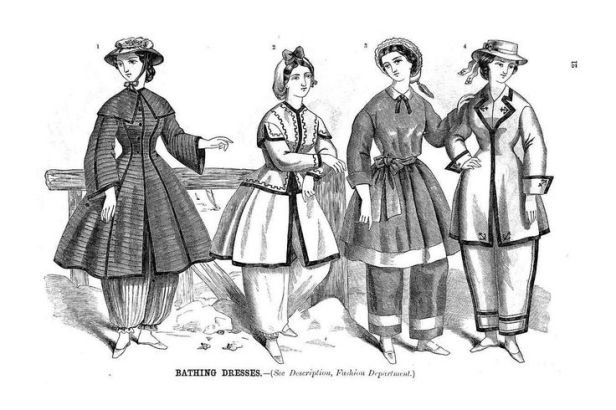
The recent photos in the media showing armed police apparently forcing a Muslim woman wearing a burkini on a French beach to remove it, or alternatively some of her outer clothing, in public, and then seemingly fining her, highlight beautifully the challenges facing historians in a post-modern historical world. What the ‘facts’ of the matter really are is no longer relevant. It is what we believe to be happening that counts, and so it is our interpretation of those facts that matters. Whether or not it was really a dreaded burkini (an outfit “not respecting good morals and secularism”) – at best, unhygienic, or at worst, to quote the French Prime Minister, part of the “enslavement” of (Muslim) women, this episode underlines yet again how central Muslim women’s bodies are to wider questions of identity, community and ‘modernity’. For the last couple of centuries Muslim women have been under close scrutiny in terms of what they wear, or do not wear. Their sartorial choices have not been individual choices. Rather they are so often the litmus test for ideas about progress versus non-progress, however these two terms might be understood. Interestingly, back in the 1850s, when the US activist Amelia Jenks Bloomer pioneered the wearing of the loose pantaloons that came to bear her name, western women followed the example of so-called eastern (Muslim) women and adopted ‘the Turkish dress’ in order to liberate themselves from the restrictive clothing – complete with bone-crunching corsets – that dominated at that time. Of course, bloomers in due course retreated to the private world of Western women’s underwear. Burkinis, like other supposedly threatening forms of covering worn by twenty-first century Muslim women, have to be seen, like the women who wear them, in public. Surely their public presence is a good thing?
See here for an informed discussion of when and why items of clothing have caused political storms.
Sarah Ansari is Professor of South Asian History and head of the Department of History at Royal Holloway, University of London.
[…] From Bloomers to Burkinis: The Same Old Story? by Sarah Ansari […]
LikeLike
[…] From Bloomers to Burkinis: The Same Old Story? by Sarah Ansari […]
LikeLike
Reblogged this on The Bedford Centre Blog and commented:
While we were on our summer break, Sarah Ansari, Professor of South Asian History at Royal Holloway and a member of the Bedford Centre wrote about her views on the controversial treatment of Muslim women wearing ‘Burkinis’. It was first posted on the Historians for History blog in August and we are pleased to be able to reblog it here.
LikeLike
[…] Source: From Bloomers to Burkinis: The Same Old Story? by Sarah Ansari […]
LikeLike